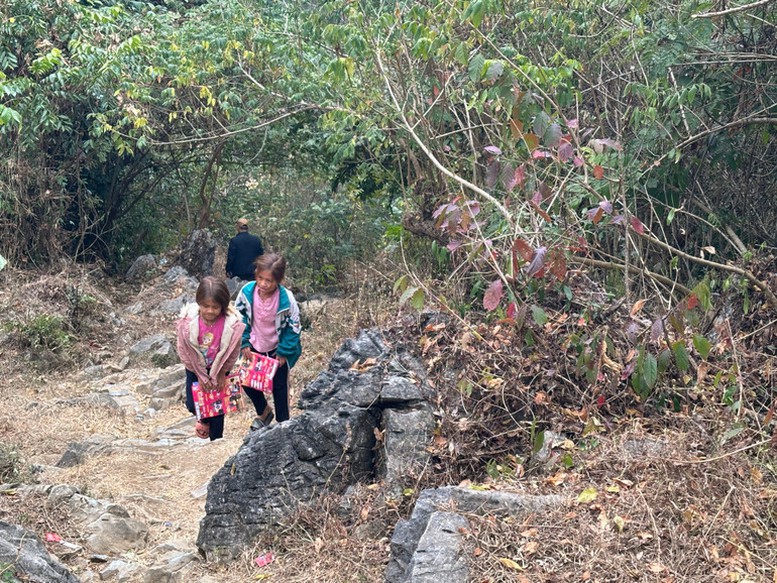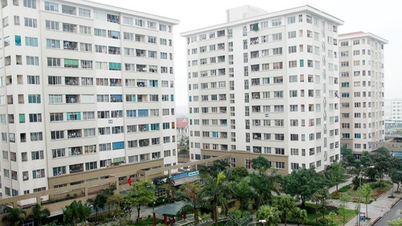The number of boarding schools is still small.
With the special attention of the Party and the State, the education and training of ethnic minority and mountainous areas has had strong changes. The scale of schools in mountainous areas and ethnic minority areas is increasingly expanding. According to the Ministry of Education and Training , ethnic minority and mountainous areas currently have 20,495 schools (preschool, primary, secondary and high schools).
With investment policies, economic development support, improved living standards, along with direct education support policies from the State, ethnic minorities have more conditions to take care of their children to pursue education. Data in the "Statistical Yearbook 2023" of the General Statistics Office - Ministry of Planning and Investment (now the General Statistics Office - Ministry of Finance ) shows that, as of the 2023-2024 school year, the whole country has nearly 3.29 million ethnic minority students at all levels. While 10 years ago (2014-2015 school year), the whole country had only about 2.5 million ethnic minority students at all levels.
The increase in the number of ethnic minority students is a testament to the effectiveness of investment policies, supporting socio -economic development in ethnic minority and mountainous areas in general and policies supporting ethnic minority education in particular. However, in the context of limited state budget, despite priority, the resources allocated to implement investment policies, supporting educational development in ethnic minority and mountainous areas have not yet met the requirements, leading to some policies not achieving the expected goals.
For example, the implementation of the Project to consolidate and develop the system of ethnic minority boarding schools (PTDTNT) was approved by the Prime Minister in Decision No. 1640/QD-TTg dated September 21, 2011. The project set a target of having 317 boarding schools for ethnic minorities nationwide by 2015. However, it was not until the 2023-2024 school year that this target was reached with 318 boarding schools for ethnic minorities nationwide.
According to a report by the Ministry of Education and Training, in the 2023-2024 school year, there will be nearly 104,000 students at 318 ethnic minority boarding schools. In addition, the country has about 300,000 ethnic minority high school students studying at 1,213 ethnic minority boarding schools.
Comparing the number of boarding and semi-boarding students and the total number of ethnic minority high school students in the 2023-2024 school year, we can see that, except for those whose houses are close to the school, there is still a large number of ethnic minority high school students in remote areas who have to climb mountains and wade through streams every day to get to school. With the characteristics of fragmented terrain, scattered population, and lack of boarding facilities, the road to school for them is still very arduous.

Students in Lung Pu residential area, Na Lan village, Hiep Luc commune, Ngan Son district, Bac Kan province cross mountain passes twice a day to go to school - Photo: VGP
Lung Pu residential area, Na Lan village, Hiep Luc commune (Ngan Son district, Bac Kan province) is located precariously on the top of a mountain, where 35 households live, 100% of whom are Mong ethnic people. To get to Lung Pu, from National Highway 279, you have to go through nearly 3km of difficult trails, which motorbikes cannot pass through during the rainy season. However, in the cold winter or hot summer, more than 20 students of Hiep Luc Primary School from grades 1 to 5 here still have to wake up early and walk down the mountain to get to school. There is no boarding or semi-boarding school, so students have to pack lunch for themselves, and after finishing school in the afternoon, they follow the trail back to Lung Pu.
According to the reporter's investigation, in order to pursue education, many students in Ngan Son district still go to and from school twice a day. The whole district currently has only 01 ethnic minority boarding school while the number of students is very large. In the 2024-2025 school year, Ngan Son district has a total of 6,253 students; of which 2,756 are primary school students and 1,786 are secondary school students.
Still many concerns…
Not only in mountainous areas but also in the plains, the way to school for many ethnic minority students is still very difficult. For example, at Dat Mui 2 Primary School, Dat Mui Commune - a locality with a large Khmer ethnic population in Ngoc Hien District (Ca Mau Province), in the 2024-2025 school year, the whole school has 350 students, of which about 75-80% of students go to school mainly by boat.

The wobbly ferry trips transport students in Dat Mui commune, Ngoc Hien district, Ca Mau province to pursue education - Photo: VGP
According to Mr. Ly Van Quy, a teacher at Dat Mui 2 Primary School, families who have boats or sampans take their children to and from school every day. The most difficult situation is for families who live far from school and in sparsely populated areas where ferries do not pass by. In order for their children to go to school, every day, at dawn, parents have to walk a few kilometers to the main road to wait for ferries to get to school.
The journey to school of Dat Mui 2 Primary School students as well as more than 20 students in Lung Pu residential area (Bac Kan province) is also the journey of many ethnic minority students whose houses are far from school.
The second survey data on the socio-economic situation of 53 ethnic minorities in 2019 showed that to get to school, primary school students need to travel an average distance of 2.2 km (Mang and La Ha students have to travel 5.2 km and 3.8 km, respectively). At secondary school level, students have to travel an average distance of 3.7 km (Mang students have to travel an average distance of 12.6 km; La Ha students have to travel 8.2 km; Kho Mu students have to travel 8.2 km; La Hu students have to travel 7.8 km). At high school level, the average distance to school is 10.9 km; of which O Du students have to travel up to 52.2 km; Ro Mam students have to travel 44.3 km; Mang students have to travel 30.2 km; Cong students have to travel 29.5 km; La Hu students have to travel 27.8 km;...
Although this data was collected 6 years ago (currently, the results of the third socio-economic information survey of 53 ethnic minorities in 2024 are being compiled and are expected to be announced in July 2025), the current basic situation has not changed much. Because the number of schools in ethnic minority and mountainous areas has not changed much compared to the 2019 statistics (in 2019, the whole country had nearly 21,600 schools; now after merging schools, there are about 20,495 schools).
In the context of a lack of boarding schools as the above figures show, many ethnic minority students in remote areas still have to overcome the bumpy road from home to school every day, which poses many potential safety risks for them.
At the ceremony to announce the National Assembly's Resolution on the establishment of the Ministry of Ethnic Minorities and Religions on March 1, 2025, following the Politburo's decision to exempt tuition fees for all students from preschool to high school nationwide from the 2025-2026 school year, Prime Minister Pham Minh Chinh expressed his concerns about boarding schools for students in remote areas. The head of the Government requested the Minister of Ethnic Minorities and Religions and the Minister of Education and Training to urgently develop a project to build schools nationwide this year so that students can have boarding schools, "not having to travel far, not having to walk dozens of kilometers to school", and at the same time take care of their food and accommodation.
(continued) Lesson 2: Models that need to be replicated
Son Hao


![[Photo] Anh Hoang - Dinh Duc successfully defended the men's doubles championship of the National Table Tennis Championship of Nhan Dan Newspaper](https://vphoto.vietnam.vn/thumb/1200x675/vietnam/resource/IMAGE/2025/5/23/d6ab3bcac02c49928b38c729d795cac6)
![[Photo] Top players gather at the 2025 Nhan Dan Newspaper National Table Tennis Championship](https://vphoto.vietnam.vn/thumb/1200x675/vietnam/resource/IMAGE/2025/5/23/9ad5f6f4faf146b08335e5c446edb107)

























































![[Photo] The Central Party Executive Committee delegation visits former President Tran Duc Luong](https://vphoto.vietnam.vn/thumb/402x226/vietnam/resource/IMAGE/2025/5/24/32f67673454445aab0f1f2af331cb170)




































Comment (0)